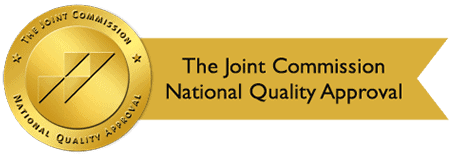By: Design for Change Recovery
Categories:
Does the ‘Quick-Fix’ Mentality Increase Vulnerability to Stress and Substance Use?
You are here:Today, Americans are always looking for easier ways to accomplish things, to do more things at once, and to do them faster. Living in a demanding, fast-forward mode day and night drives many people to seek immediate relief. They don’t have time to deal with the stress, anxiety, or discomfort. They just want it to end. This ‘quick-fix’ mentality is one of the leading causes of stress and substance use is often the go-to solution.
What Is “Quick-Fix’ Mentality?

One big problem of quick-fix solutions is that they may be temporary and come with many downsides. But society has been conditioned to expect instant results, so the potential consequences of quick-fixes are often disregarded.
Relationship Between Stress and Substance Use
The fact that almost any discomfort or ailment can be treated with a pill is one of the main reasons for substance misuse or inappropriate use today. It’s easier and faster to take medication rather than make healthier lifestyle choices.
Nevertheless, treating mental disorders such as anxiety or depression with prescription meds can be helpful. However, many prescription drugs are highly addictive. Thousands of people become addicted to the medications even when taken as directed.
Commonly Prescribed Antidepressants
- SSRIs – Selective Serotonin Reuptake Inhibitors
- Celexa (citalopram)
- Lexapro ( escitalopram oxalate)
- Prozac (fluoxetine)
- Luvox (fluvoxamine)
- Zoloft (sertraline)
- SNRIs – Selective Serotonin & Norepinephrine Inhibitors
- Cymbalta (duloxetine)
- Effexor (venlafaxine)
- Pristiq (desvenlafaxine succinate)
- MAOIs – Monoamine Oxidase Inhibitors
- Marplan (isocarboxazid)
- Nardil (phenelzine)
- EMSAM (selegiline)
- NMDA – N-Methyl-D-Aspartate Receptor Antagonist
- Tetracyclic Antidepressants
Commonly Prescribed Anti-Anxiety Medications
- Benzodiazepines
- Xanax (alprazolam)
- Librium (chlordiazepoxide)
- Valium (diazepam)
- Ativan (lorazepam)
- Beta-Blockers
- Inderal (propranolol)
- Buspar (buspirone)
- Antidepressants
The downside to taking these medications is that they take time to work. Instead of being a quick-fix, most antidepressants take four to eight weeks to produce the desired effects. This delay may lead a person to believe that the medication isn’t working, so they take a larger dose. Subsequently, addiction may follow.
Quick-Fix Syndrome for Stress and Substance Use
Many people spend years putting addictive substances into their bodies. They struggle daily with the health consequences and try to hide their addiction from others. Yet, they don’t believe they can spare the time for rehab. They avoid treatment because it isn’t a quick solution to their problem.
Addiction is a disorder that develops over time and is complex in nature. It involves more than the physical dependence on a substance. Other factors such as environment, mental health disorders, relationship problems, and financial issues play a significant role in a person’s substance use behavior. As such, a quick-fix is not likely.
The process of recovering from addiction requires commitment, motivation, and professional guidance. Inpatient treatment programs typically last 30, 60, or 90 days followed by an aftercare program. Few people are willing to invest that amount of time.
Unfortunately, the longer a person resists getting treatment, the worse their addiction becomes. As a result of the drugs’ side effects, their health is suffering and will continue to decline. Their families, jobs, and friendships begin to suffer as well.
Why Does Addiction Recovery Take So Long?
When it comes to addiction treatment, time is the key. It takes time to learn better coping skills, develop new patterns of thinking about life, and find ways to manage daily responsibilities more effectively. It also takes time to find new ways to enjoy life without the reliance on addictive substances.
Unfortunately, the effects of substance misuse or inappropriate use cannot be reversed overnight. The best approach is a comprehensive addiction treatment program that includes options proven to help people succeed in recovery.
Recovery requires a considerable amount of time spent in classes, counseling, and other therapies. To change behavior, attitudes must be altered, underlying causes identified and confronted, and new ways of thinking and reacting developed.
Find the Solution for Stress and Substance Use at Design for Change Recovery
Whether inpatient or outpatient treatment, our program is based on giving clients time to address all aspects of their substance use behavior. With our professional, evidence-based treatment program, we ensure that all mental, emotional, physical, and spiritual factors are healed for lasting recovery.
Also, we realize that after going through addiction treatment, the hard part begins. It’s time to put all the newly learned skills to use in the real world. Some people will relapse, maybe more than once. But, again, time is the key.
People in recovery need time to learn how to recognize and avoid triggers. For that reason, our extended care or aftercare program helps clients transition from rehab to the outside world. We make sure they have the continued support and guidance needed during this challenging time.
The relationship between stress and substance use is too complex to be solved with a quick-fix. You can find the right solution for your substance use issues at Design for Change Recovery in Lancaster, CA. For more information about our evidence-based, accredited, and effective treatment methods, call us today.
Sources:
- onphilanthropy.com/ – Avoiding the Quick-Fix Syndrome in Development


